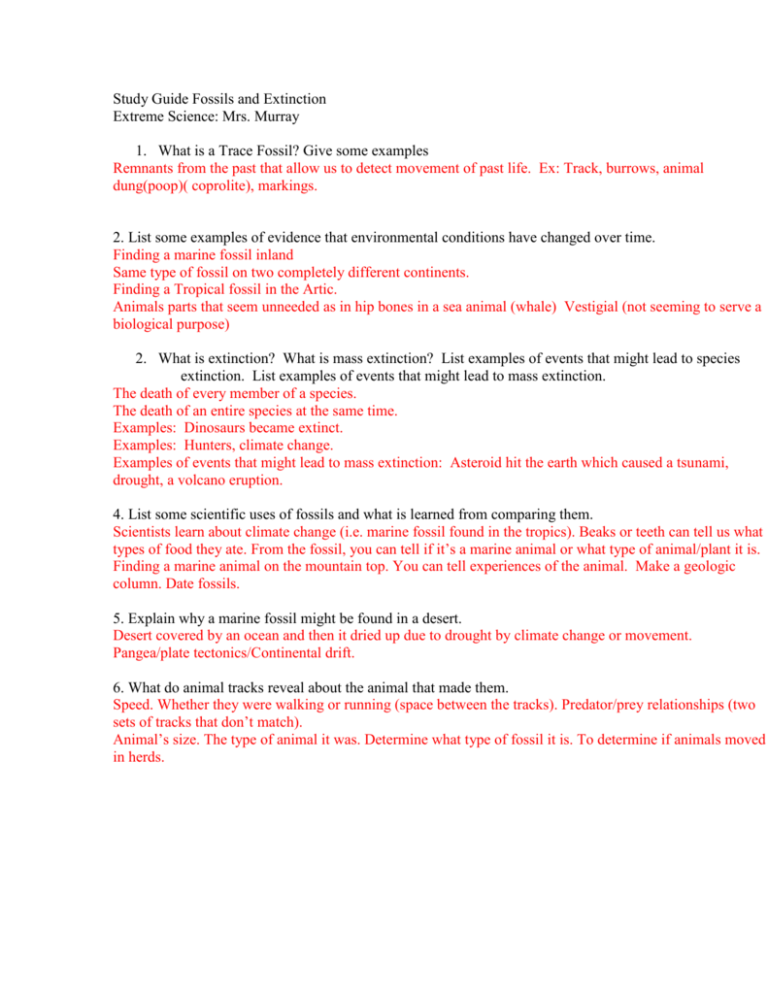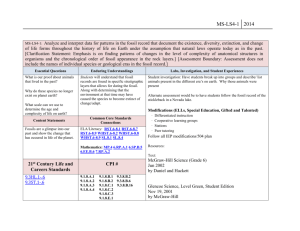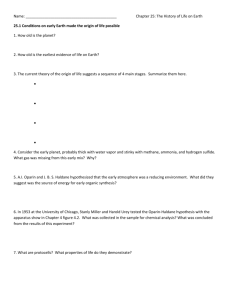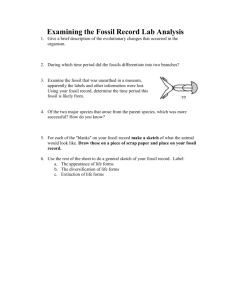KPrep Study Guide Fossils and Extinction Filled in
advertisement

Study Guide Fossils and Extinction Extreme Science: Mrs. Murray 1. What is a Trace Fossil? Give some examples Remnants from the past that allow us to detect movement of past life. Ex: Track, burrows, animal dung(poop)( coprolite), markings. 2. List some examples of evidence that environmental conditions have changed over time. Finding a marine fossil inland Same type of fossil on two completely different continents. Finding a Tropical fossil in the Artic. Animals parts that seem unneeded as in hip bones in a sea animal (whale) Vestigial (not seeming to serve a biological purpose) 2. What is extinction? What is mass extinction? List examples of events that might lead to species extinction. List examples of events that might lead to mass extinction. The death of every member of a species. The death of an entire species at the same time. Examples: Dinosaurs became extinct. Examples: Hunters, climate change. Examples of events that might lead to mass extinction: Asteroid hit the earth which caused a tsunami, drought, a volcano eruption. 4. List some scientific uses of fossils and what is learned from comparing them. Scientists learn about climate change (i.e. marine fossil found in the tropics). Beaks or teeth can tell us what types of food they ate. From the fossil, you can tell if it’s a marine animal or what type of animal/plant it is. Finding a marine animal on the mountain top. You can tell experiences of the animal. Make a geologic column. Date fossils. 5. Explain why a marine fossil might be found in a desert. Desert covered by an ocean and then it dried up due to drought by climate change or movement. Pangea/plate tectonics/Continental drift. 6. What do animal tracks reveal about the animal that made them. Speed. Whether they were walking or running (space between the tracks). Predator/prey relationships (two sets of tracks that don’t match). Animal’s size. The type of animal it was. Determine what type of fossil it is. To determine if animals moved in herds. 7. Explain and illustrate the law of superposition. A principal that states that younger rocks lie above older rocks if the layers have not been disturbed. 8. What is an index fossil? A species that lived a short period of time and then became extinct and be able to state which period in time it came from. 9. Name and define the different types of fossils. Trace fossil- Remnants from the past that allow us to detect movement of past life. Cast fossil- a type of fossil that forms when sediments fill in the cavity left by a decomposed organism. Index fossil- A species that lived a short period of time and then became extinct and be able to state which period in time it came from. Mold fossil- a mark or cavity made in a sedimentary surface by a shell or other body. 10. Explain how fossils can tell us about the past and the future? ****All of the questions build up to help you answer this question. There isn’t one definitive answer. Answer this in your OWN words. ****






